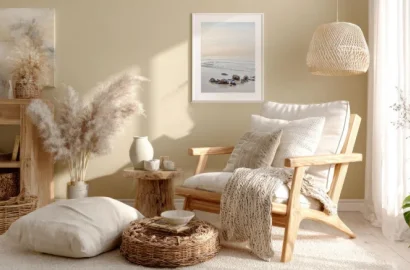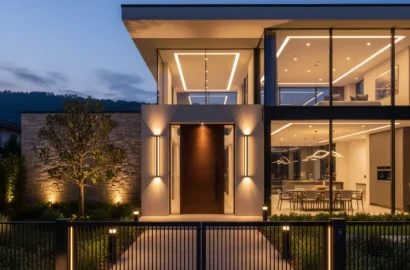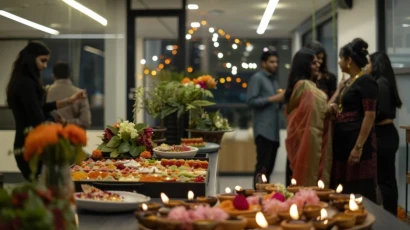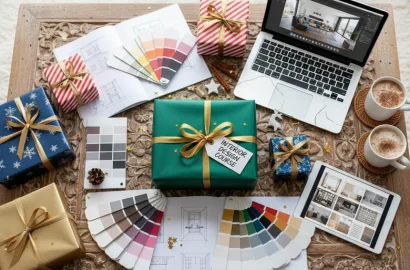Bangalore is home to a diverse pool of acclaimed interior designers, each offering specialized services and unique styles. Continue reading to discover our picks for the top 7 interior designers in the city.
If you are looking to hire an interior designer for your dream home or perhaps looking to acquaint yourself with the who’s who of the interior design space in Bangalore, you are at the right place.
Our handpicked list of the best interior designers in Bangalore features a group of accomplished names who collectively bring a wealth of expertise to the field. Their diverse skills are showcased through extensive portfolios highlighting their achievements in residential, commercial, retail, and hospitality interior design projects. If you want to have a brief overview of what all we have covered, here is an infographic for you to go through!
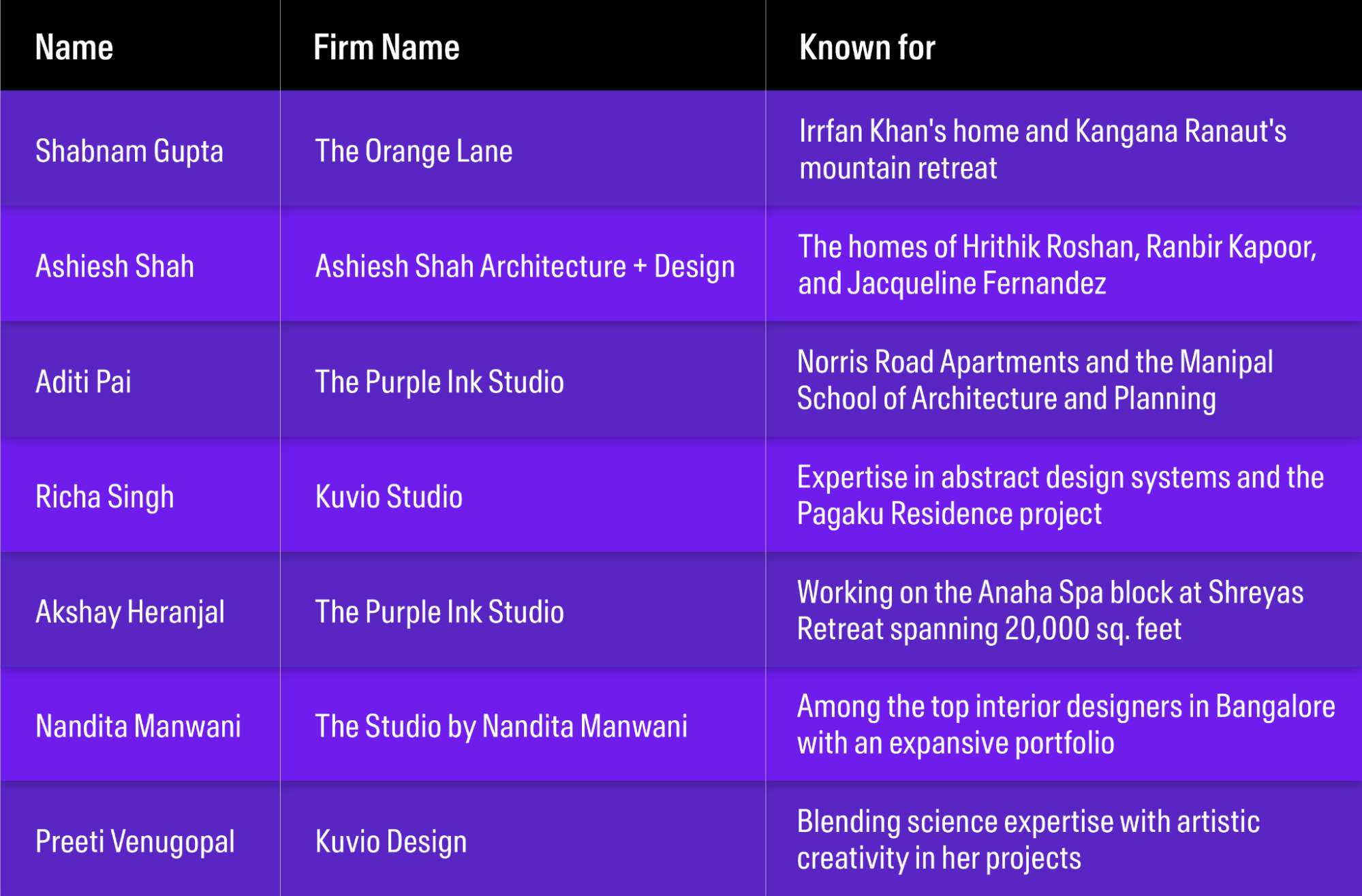
If you are looking for more details, without much ado, let’s get right to it!
Contents:
Best Interior Designers in Bangalore
How to become an interior designer?
Top Interior Designers in Bangalore
1. Shabnam Gupta

Image Courtesy: Houzz
Shabnam Gupta is a renowned interior designer who is celebrated for her iconic projects across India and the founder of The Orange Lane. With a career marked by clarity of vision, she has crafted arresting interiors for celebrity homes, restaurants, and boutique hotels.
Inspired by nature, Gupta seamlessly blends traditional elements with contemporary design, creating visually delightful spaces known for their originality and timeless appeal. Notable projects include Irrfan Khan’s rustic yet lavish home and Kangana Ranaut’s eccentric mountain retreat.
Her accolades include the Elle Deco International Design Awards (EDIDA) and Architectural Digest’s AD50 The Visualist. She has also received consecutive Asia Pacific Property Awards from 2014 to 2016, showcasing her excellence in the real estate and property industry.
2. Ashiesh Shah

Image Courtesy: Verve Magazine
Architect Ashiesh Shah, the founder and creative director of Ashiesh Shah Architecture + Design, seamlessly integrates art, architecture, and design in his innovative projects. Shah’s design philosophy is rooted in the Japanese concept of Wabi-Sabi, celebrating beauty in imperfection and impermanence.
His portfolio spans office spaces, penthouses, concept stores, and restaurants, including renowned celebrity homes like those of Hrithik Roshan, Ranbir Kapoor, and Jacqueline Fernandez.
His distinctive aesthetic has earned him recognition as the Elle Décor Designer of the Year in 2016 and placement among the 50 most influential names in architecture and design by Architectural Digest. Among his notable accolades, Shah received the Most Respected Architect of the Year award at the GROHE Summit, India 2019. His work has been featured extensively in publications like The New York Times, Vogue, Architectural Digest, and Casa Vogue.
3. Aditi Pai

Image Courtesy: Architecture Live
As the principal architect and co-founder of The Purple Ink Studio, Aditi Pai has played a pivotal role in propelling the venture to prominence since its inception in Bengaluru in 2011. At the core of the studio’s design philosophy lies a commitment to a layered, contextual, and experimental approach.
This ethos underscores their exploration of various scales and typologies, evident in an extensive portfolio featuring notable projects such as the Norris Road Apartments in Bangalore and the Manipal School of Architecture and Planning in Manipal.

The studio’s relentless pursuit of excellence is evident in its impressive collection of accolades, boasting 8 international awards, 16 Indian awards, and 16 shortlist recognitions. Noteworthy among their achievements is the prestigious inclusion in the PERSPECTIVE 40 under 40 Asia list in 2017, acknowledging The Purple Ink Studio as one of the 40 under 40 architectural visionaries in Asia poised to shape the future of design. Additionally, in 2016, the studio was honored with the ‘Best Practice in India’ award at the TRENDS EXCELLENCE AWARDS, and the following year, they clinched the WADE Asia Young Architect of the Year award, among other esteemed national and international recognitions.
4. Richa Singh

Image Courtesy: Kuvio Studio
Richa Singh, the founder and chief designer of Kuvio Studio in Bangalore, demonstrates a significant depth of experience and proficiency within the field of interior design. Recognized for her meticulous attention to detail and commitment to innovation, Singh adeptly manages various facets of design and business operations to deliver exemplary spaces.
Her portfolio encompasses a wide spectrum of projects, spanning residences, offices, commercial complexes, and abstract design systems. Her designs are distinguished by their emphasis on functionality, aesthetics, and innovative approaches, showcasing her ability to cater to the individual requirements and preferences of her clients with precision and finesse. The Pagaku Residence designed by the Kuvio Studio has been awarded the runner-up in the Urban Design and Architecture Design Awards in 2018.
5. Akshay Heranjal

Image Courtesy: Architects and Interiors India
Akshay Heranjal, co-founder of The Purple Ink Studio, found his way into architecture by chance. In 2011, he, along with co-founder Aditi Pai Heranjal, established the studio in Bengaluru, becoming a dynamic force in reshaping the city’s architectural landscape.
The Purple Ink Studio is a testament to the collaboration of two distinct design philosophies. Akshay’s rational and aesthetic approach, combined with Aditi Pai’s focus on nature and natural elements, creates a studio that continually evolves, exploring the intersection of architecture, landscape, and sustainability.
Among their notable projects is the Anaha Spa block at Shreyas Retreat in Bengaluru, covering 20,000 square feet. Recognized with the Artist In Concrete Awards (2015-16), this project seamlessly integrates into the earth, featuring exposed concrete and brick structures, sunken courts for light and air movement, and a design language emphasizing handcrafted elements.
6. Nandita Manwani
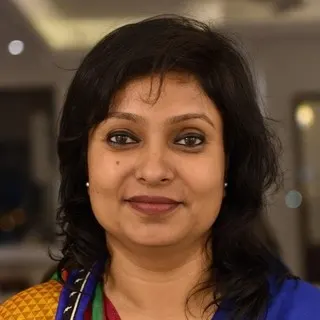
Image Courtesy: Linkedin
As the founder of The Studio by Nandita Manwani, she leads a design and interior-works company dedicated to crafting lifestyle-based residential interiors. With a prolific career, Nandita has earned widespread recognition for her work. She has been honored as one of the top women interior designers in Bangalore and recognized as one of the top upcoming interior designers in India.
Nandita has been awarded the Best of Houzz acclaim for two consecutive years, solidifying her reputation as a leading figure in interior design. She is also celebrated as one of the top Interior Designers to follow by esteemed publications.
7. Preeti Venugopal

Image Courtesy: Kuvio Studio
Preeti Venugopal, the principal designer at Kuvio Design, offers a distinctive perspective in the realm of interior design. With a foundation in microbiology, Venugopal uncovered her genuine interest in interior design, effortlessly amalgamating artistic elements with scientific principles.
Leveraging her scientific background, Venugopal views interior design as a harmonious blend of art and science. She asserts that crafting an aesthetically pleasing home mirrors the creation of a work of art, necessitating precision and systematic planning akin to scientific principles. Her portfolio attests to this philosophy and has garnered commendations for the studio.
How to become an interior designer in 2025?
If you’re looking to pursue interior design as a career, here are some key steps you can follow:
Create an Educational Foundation: A bachelor’s degree from a reputable institution provides a solid foundation. Obtain a formal education in interior design and ensure the program is accredited by relevant industry associations.
Build a Strong Portfolio: Develop a comprehensive interior design portfolio showcasing the projects you’ve undertaken. Include a variety of styles and project types to demonstrate versatility and creativity.
Gain Practical Experience: Seek internships or entry-level positions in design firms or related industries. Practical experience enhances your skills and provides valuable insights into the nuances of being a professional in the field.
Stay Updated on Industry Trends: Keep abreast of the latest trends, materials, and technologies in interior design. Attend workshops, and conferences, and continually expand your knowledge to remain relevant.
Start Networking: Establish a professional network by attending industry events and connecting with established designers. Networking opens doors to opportunities, mentorship, and collaborations.
Check for Licensing and Certification Requirements: Research and understand the licensing requirements in your region. Some areas may require interior designers to be licensed. Obtain relevant certifications to enhance your credibility.
Establish a Digital Presence: Create a strong online presence. Showcase your portfolio on professional platforms and social media. Utilise interior design tools for design presentations and stay connected with the online design community.
By following these steps, aspiring interior designers can build a solid foundation, gain practical experience, stay informed, and create a professional network, ensuring a promising career in interior design.
What’s Next
We hope this list gave you ample insight into the stalwarts of Interior Design in Bangalore.
If we’ve inspired you enough to pursue an education in interior design and you need assistance for the same, here are some resources you can consider:
- Watch this session by Snehanshu Mukherjee, Founding Partner at T.E.A.M and Mansi Almadi, an Interior Designer at Studio Lotus
- Talk to a course advisor to discuss how you can transform your career with one of our courses.
- Check out our Interior Design courses – all courses are taught through live, interactive classes by industry experts.
- Take advantage of our scholarship and funding options to overcome any financial hurdle on the path of your career transformation.
Note: All information and data from external sources are believed to be accurate as of the date of publication.





